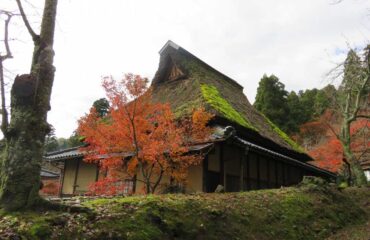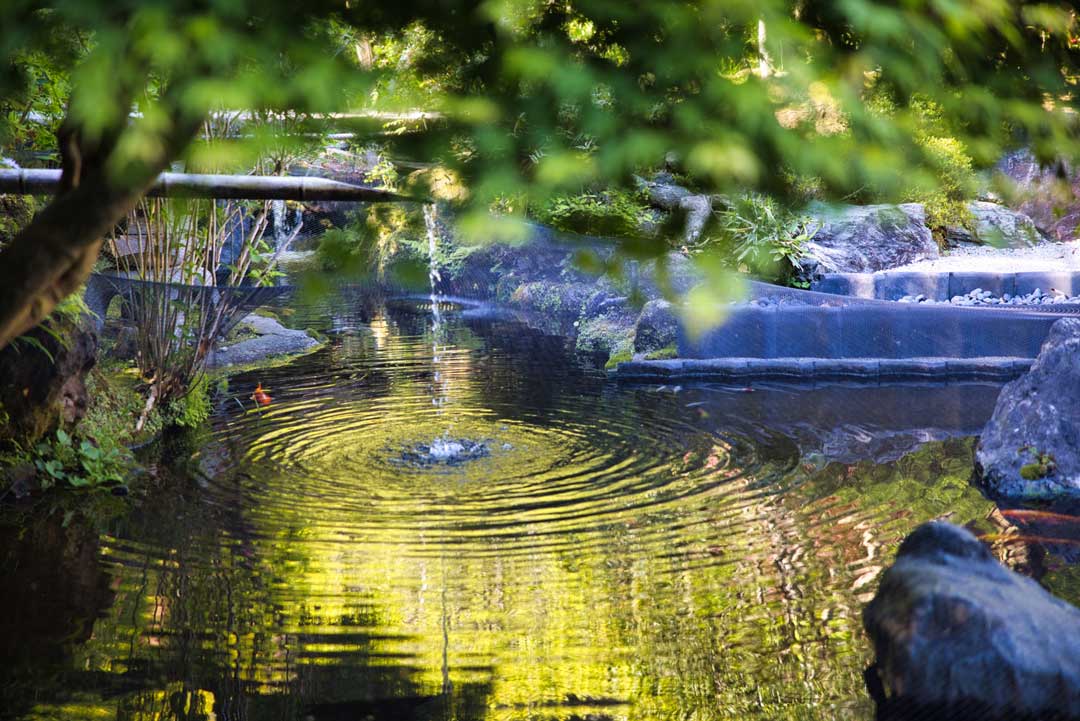
Japanese gardens symbolize Japanese culture with their unique aesthetics and intricate techniques.
Ranging from historical gardens dating back to the Nara period to modern gardens with contemporary designs, Japanese gardens exhibit various expressions according to their era.
In this article, we will introduce the charm of Japanese gardens and provide tips for visiting them.
Characteristics of Japanese Gardens
Japanese gardens are known for their unique aesthetics and tranquil atmosphere.
They can be broadly categorized into three main types: Karesansui gardens, Kaiyūshiki gardens, and Roji (tea gardens).
Each type has distinct features that showcase the beauty of Japanese culture and landscape.
Karesansui Gardens (Dry Landscape Gardens)
Karesansui gardens are characterized by their minimalistic design and use of stones, sand, and gravel to represent natural elements such as mountains, rivers, and oceans.
Plants are used sparingly, with the primary focus on the arrangement of rocks and the raked patterns in the sand.
These gardens are designed to evoke a sense of tranquility and deep contemplation.
Famous examples of Karesansui gardens include Ryōan-ji in Kyoto and Daisen-in at Daitoku-ji.
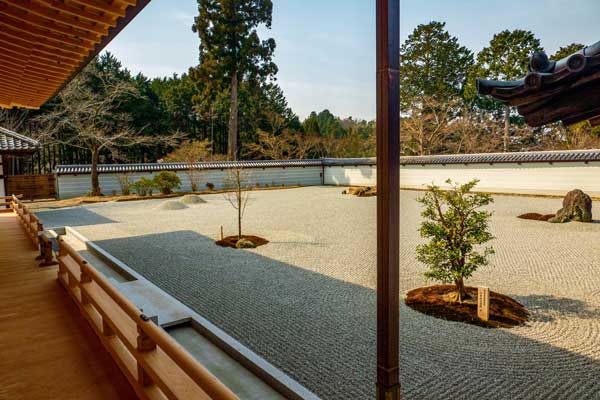
Kaiyūshiki Gardens (Strolling Pond Gardens)
Kaiyūshiki gardens are designed for visitors to enjoy while strolling along pathways that wind through the carefully arranged landscape.
These gardens often feature ponds, islands, and bridges, with various plants and trees creating a harmonious, picturesque scene.
The design of these gardens often incorporates the concept of borrowed scenery (shakkei), in which the surrounding landscape is integrated into the garden composition.
Notable examples of Kaiyūshiki gardens are Kenroku-en in Kanazawa and Kōraku-en in Okayama.
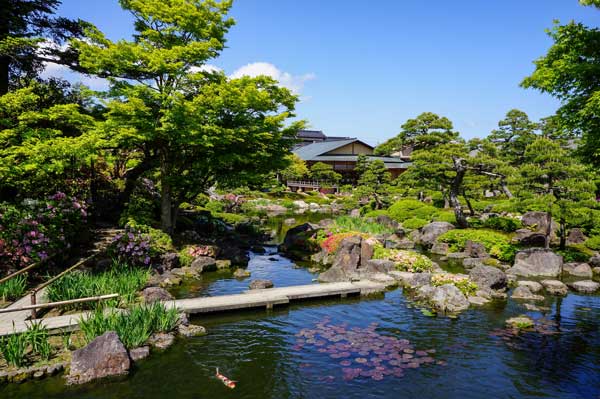
Roji (Tea Gardens)
Roji, or tea gardens, serve as the setting for the traditional Japanese tea ceremony.
These gardens are designed to create a tranquil and contemplative atmosphere as guests transition from the outside world to the tea room.
Roji gardens typically feature stepping stones, stone lanterns, and a water basin (tsukubai) for ritual cleansing.
The layout and elements of a Roji garden aim to evoke a sense of rustic simplicity and natural beauty.
The Katsura Imperial Villa in Kyoto is a famous example of a Roji garden.
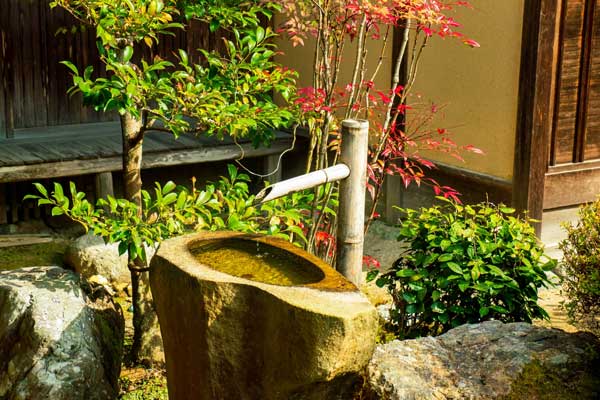
Introducing Japan’s Three Great Gardens
Let’s explore the “Three Great Gardens” of Japan.
These famous gardens showcase the charm of Japanese gardens, allowing even first-time visitors to fully appreciate their beauty.
Kenroku-en (Ishikawa Prefecture)
Located in Kanazawa City, Ishikawa Prefecture, Kenroku-en is a nationally designated Special Place of Scenic Beauty.
This 11.7-hectare strolling pond garden was built in the mid-17th century as part of the outer garden of Kanazawa Castle.
During winter, the trees are adorned with yukitsuri, a conical rope structure that prevents branches from breaking under the weight of snow, which is considered a winter tradition in Kanazawa.
Address: 1-1 Marunouchi, Kanazawa City, Ishikawa Prefecture
Official website: http://www.pref.ishikawa.jp/siro-niwa/kenrokuen/
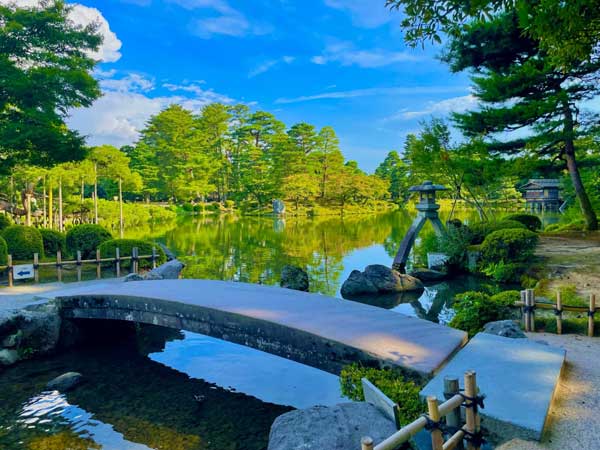
Koraku-en (Okayama Prefecture)
Koraku-en, located in Okayama City, Okayama Prefecture, is a strolling pond garden that incorporates the surrounding mountains and Okayama Castle into its design as borrowed scenery.
The central feature of the garden is Enyoutei, a tea house built for entertaining guests.
Scattered throughout the garden are other structures that offer ideal vantage points to appreciate the landscape, with the view of the pond from Renchiken being particularly remarkable.
Address: 1-5 Korakuen, Kita Ward, Okayama City
Official website: http://okayama-korakuen.jp/
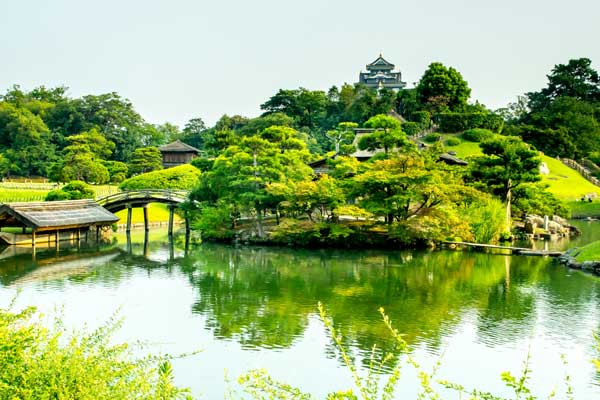
Kairaku-en (Ibaraki Prefecture)
Kairaku-en is a 13-hectare garden located in Mito City, Ibaraki Prefecture, established in 1842.
The name “Kairaku-en” means “a garden to enjoy together,” reflecting the wishes of its creator, Tokugawa Nariaki, who wanted the garden to be a place where the lord and his people could enjoy together.
In spring, the garden is filled with cherry blossoms, while in early summer, deep red Kiriyama azaleas bloom.
The lush greenery of cedar forests and Moso bamboo is vibrant in summer, and in autumn, visitors can admire the hagi (bush clover) and autumn leaves.
In winter, Kairaku-en is known for its plum trees, boasting around 100 varieties and 3,000 specimens.
Address: 1-3-3 Tokiwa-cho, Mito City, Ibaraki Prefecture
Official website: http://www.koen.pref.ibaraki.jp/park/kairakuen01.html
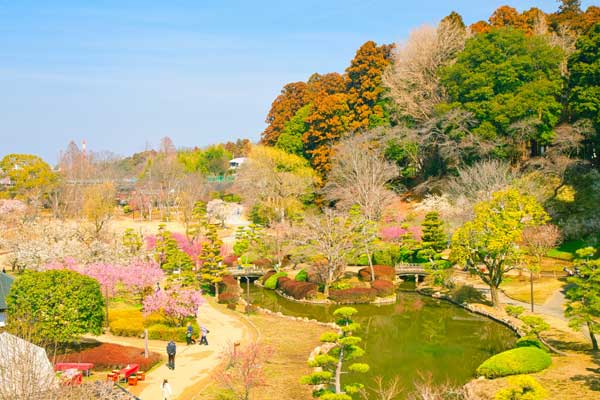
Other Famous Japanese Gardens
In addition to the three major gardens of Japan, there are numerous other fantastic gardens throughout the country.
Below, we introduce some popular and famous gardens.
Nanzen-ji (Kyoto Prefecture)
Nanzen-ji, located in Kyoto city, is a prestigious Zen temple where you can experience the serene atmosphere of its extensive grounds.
The temple’s highlight is the “Hojo Garden”, a dry landscape garden that is considered one of the archetypal scenes of Japanese gardens.
Nanzen-ji, especially beautiful during the autumn leaf season, is a place where you can fully enjoy the splendor and tranquility of a Zen temple.
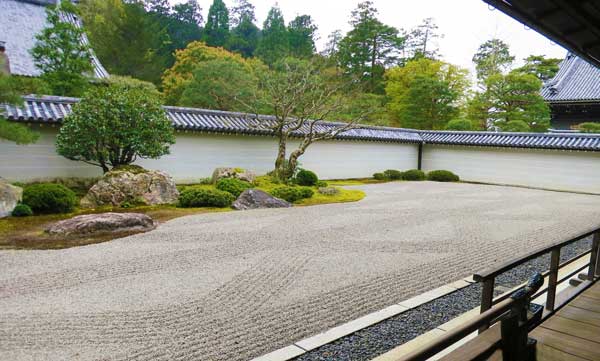
Ritsurin Garden (Kagawa Prefecture)
Located in Takamatsu City, Ritsurin Garden is known as a feudal lord’s garden from the Edo period, with a beautifully maintained pond-style garden.
You can enjoy nature throughout the four seasons.
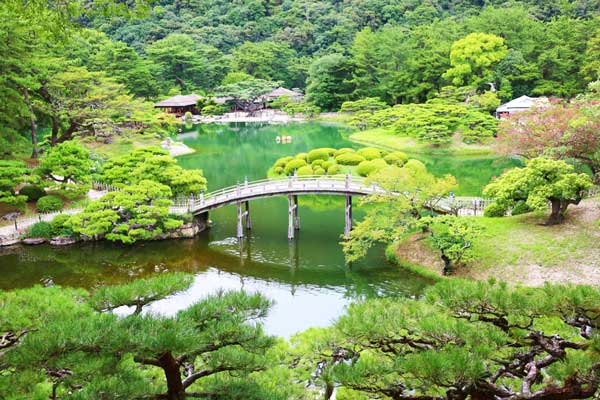
Meiji Jingu Gaien (Tokyo)
Meiji Jingu Gaien, located in Shibuya Ward, Tokyo, is a vast garden within the precincts of Meiji Shrine.
It is home to around 100,000 trees, and is popular for its beautiful cherry blossoms in spring and autumn leaves.
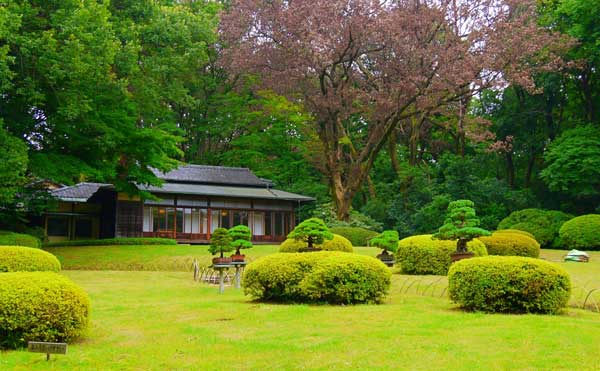
Sanzen-in (Kyoto Prefecture)
Sanzen-in in Ohara is a Tendai Buddhist temple nestled in the mountains of Kyoto’s Sakyo Ward.
It features a strolling garden where you can enjoy flowers and autumn leaves throughout the year. It is particularly well known for its fall foliage.
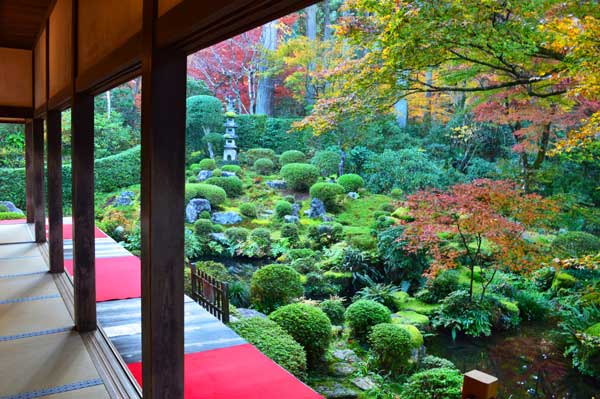
Adachi Museum of Art (Shimane Prefecture)
The Adachi Museum of Art in Yasugi City, Shimane Prefecture, primarily exhibits modern Japanese paintings, with a particular focus on the works of Taikan Yokoyama.
In addition, there is an extensive Japanese garden, which is meticulously maintained under the belief of the museum’s founder, Zenko Adachi, that “a garden is also a painting.”
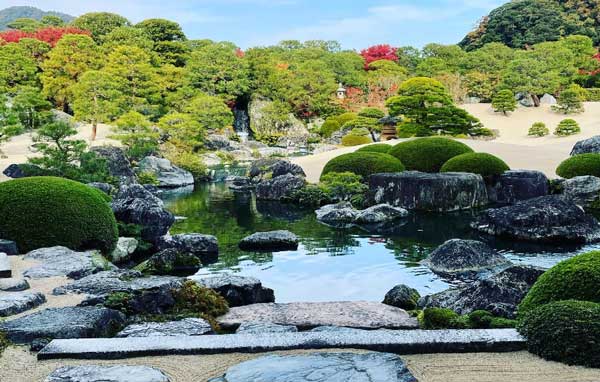
Tips for Visiting Japanese Gardens
Japanese gardens offer different sceneries depending on the season, so you can enjoy seasonal highlights such as cherry blossoms in spring and autumn foliage.
Additionally, using guidebooks or smartphone apps to understand the history and design of the gardens will enhance your experience.
Furthermore, to fully appreciate the tranquil atmosphere, observe proper manners and take your time strolling through the garden.
Conclusion
Japanese gardens are spaces filled with unique aesthetics and history.
By understanding the charm of each type, such as Karesansui, Kaiyūshiki, and Chaniwa gardens, and paying attention to the visiting season and manners, you can further enjoy exploring Japanese gardens.
Take this opportunity to fully appreciate the beauty of Japanese gardens.
Other Introduction
Tradition of Japanese Tea Ceremony – Sado



